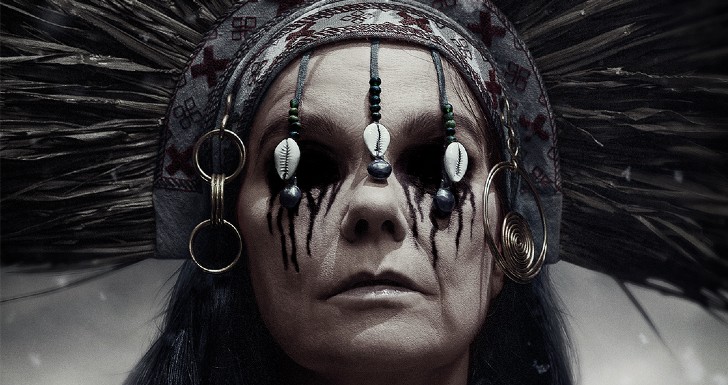Robert Eggers is one of the most acclaimed directors of the new generation. Known for his very authorial style, his fame began to be built through the film The witch (from 2015), where he already showed his vein for psychological and symbolist terror (or even for the category that came to be known as post terror, which also includes the directors Jordan Peele and Ari Aster among its exponents), as well as its main characteristics of direction.
Already in The headlight (from 2019), the director consolidated his recognition for the unusual, with a fable of terror about male isolation, with space even for references lovecraftian on the job, and with a fantastic job of Willem Dafoe and Robert Pattinson under your direction.
Thanks to this, Eggers has consolidated a very specific fan niche for his work. How would he fare in the man of the north, his first high-budget production and the opportunity to enter the world of blockbusters? Would the director maintain his typical characteristics in this situation? The answer, first of all, is yes, the movie is totally Robert Eggers, for better or for worse, even if it might go unnoticed by some.
Amleth (lived by Oscar Novak in childhood, and Alexander Skarsgård in adult life) is the son of aurvandill (Ethan Hawke), a powerful Norse king. But he is betrayed and brutally murdered by his brother, fjolnir (Claes Bang), who also takes his queen, Gudrun (Nicole Kidman), for himself as a wife.
Young Amleth witnesses it all, but manages to escape, swearing to return to avenge his father, save his mother and murder his uncle. The fugitive grows up far from his lands, but still among the Norse, and participates in the looting against the lands inhabited by the Slavs as an adult. After a particularly brutal attack (and with fantastic long-shot work from the director), Amleth meets a Slavic sorceress (a cameo by the Icelandic singer Bjork), which reminds him of his oath. Disguised as a slave and accompanied by olga (Anya Taylor-Joy), he returns to finally complete his revenge on his uncle.
It is obvious that this plot does not bring anything original, but there is a reason for that. Stories of kings betrayed by brothers, whose sons return seeking revenge, are among the most repeated themes within Western culture (even in The Lion King, classic of Disney, it is impossible not to recognize this structure), largely thanks to Hamlet, immortalized work of William Shakespeare.
However, the Shakespearean plot itself is based on a tale present in the Gesta Danorum, a work written in the 10th century by Saxo Grammaticus, which deals with the history of the Danish people. Therefore, neither the similarity of themes nor the names of Hamlet and Amleth are coincidental, as both draw from the same source.

Although fully adapted for cinematographic media (and therefore romanticized and spectacularized), it is still possible to perceive an attempt by Eggers to take the story “back to its cradle”, by placing it in the middle of the Viking age. Even so, the feature contains numerous Shakespearean references, subtly inserted in the script that the director shares with the Icelandic writer. Sjon (also known for the screenplay of the acclaimed psychological horror lamb, 2021, as well as for his work with Bjórk and director Lars Von Trier).
The film's attention is drawn to the degree of research carried out on the customs of the Nordic peoples, generating more accurate constructions and representations than in many more popular works, and making the work a delight for lovers of the history of the period. The clothes, specifically, alternate between a thorough research work (mostly) and the need for fantasy that the director brings to the film (in less common moments).
The recreation of the village and the way of life of the Nordic people is exquisite, but it is impossible not to talk about the representations of the rituals that appear in the film. These are obviously not recreations. ipsis literis of the religious practices of the ancient Scandinavians, but creations for cinematographic language inspired by historical and mythological records (such as the Volsunga Saga, 13th century), in an attempt to balance authenticity and historical fidelity with the visual spectacle that cinema demands.
Some may think that the film seems too different from Eggers' subtle and metaphorical style, since here we are talking about a raw and direct revenge story, with a lot of graphic violence explicit and great resources in the production. But I personally disagree with that view, and I see the style that made the director famous throughout the film.
Whether visual (with its typical use of cameras and color palette), sound (with the soundtrack being one of its strongest points), or conceptual (with the subjectivity of mythological, metaphorical, contemplative and dreamlike passages), you can see the director's hand in everything, as well as in the external references to the work (mainly to Shakespeare, but also to many aspects of Norse mythology, including moments when both are combined), in the division of the plot by chapters, and in the rhythm “broken” (here interspersing moments of violence and reflection).
All of this is typically Eggers, which only includes new elements, both because this is a very different plot from his previous works, and because of the greater amount of resources involved (something that no director would take a bad look at). Therefore, the film does have direct, massive and superlative moments, such as the intense religious rituals of the Vikings, as well as action scenes and battles of a brutality rarely seen in today's cinema (being closer to an updated version of the epics of the 80's and 90's). There are also moments of enormous plasticity, which refer to gigantic paintings about Norse mythology, and this is also the director's merit.
The main cast also garners praise. Skarsgård embraces the opportunity he has, and delivers an obsessed warrior, who alternates moments of coldness with outbursts of violence in his relentless quest for revenge. Nicole Kidman shines from the moment Queen Gudrun starts to gain more prominence. Anya Taylor-Joy, who had previously worked with Eggers in The Witch, shows why she is one of the most sought after actresses today as the sorceress Olga.
Ethan Hawke and Claes Bang also deliver the expected result as Aurvandill and Fjolnir, respectively. The film also features the singer Bjork, as a Slavic sorceress who helps convince Amleth to resume her goal of revenge, from Willem Dafoe as Helmir, the jester at the court of Norse kings.

This is not to say at any time that this is an easily digestible film (none of the director's works are). His portrayal of the past may seem shocking to some, and that was probably the director's aim. In addition, he never abandons the characteristics of psychological terror that are so familiar to him, diving into Amleth's mind, sometimes in a confused way, with the myth being confused with the reality.
The Man in the North, therefore, is a film that has all the characteristics that made its director famous, only with a larger scale and a more direct plot. But it's still something you could clearly tell was directed by Robert Eggers.
By: Wallace William
















































